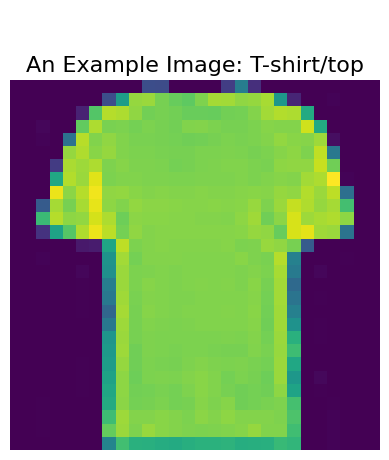This guide trains a neural network model to classify images of clothing, like sneakers and shirts, saves the trained model, and then serves it with TensorFlow Serving. The focus is on TensorFlow Serving, rather than the modeling and training in TensorFlow, so for a complete example which focuses on the modeling and training see the Basic Classification example.
This guide uses tf.keras, a high-level API to build and train models in TensorFlow.
import sys
# Confirm that we're using Python 3
assert sys.version_info.major is 3, 'Oops, not running Python 3. Use Runtime > Change runtime type'
# TensorFlow and tf.keras
print("Installing dependencies for Colab environment")
!pip install -Uq grpcio==1.26.0
import tensorflow as tf
from tensorflow import keras
# Helper libraries
import numpy as np
import matplotlib.pyplot as plt
import os
import subprocess
print('TensorFlow version: {}'.format(tf.__version__))
Create your model
Import the Fashion MNIST dataset
This guide uses the Fashion MNIST dataset which contains 70,000 grayscale images in 10 categories. The images show individual articles of clothing at low resolution (28 by 28 pixels), as seen here:

Fashion MNIST is intended as a drop-in replacement for the classic MNIST dataset—often used as the “Hello, World” of machine learning programs for computer vision. You can access the Fashion MNIST directly from TensorFlow, just import and load the data.
fashion_mnist = keras.datasets.fashion_mnist
(train_images, train_labels), (test_images, test_labels) = fashion_mnist.load_data()
# scale the values to 0.0 to 1.0
train_images = train_images / 255.0
test_images = test_images / 255.0
# reshape for feeding into the model
train_images = train_images.reshape(train_images.shape[0], 28, 28, 1)
test_images = test_images.reshape(test_images.shape[0], 28, 28, 1)
class_names = ['T-shirt/top', 'Trouser', 'Pullover', 'Dress', 'Coat',
'Sandal', 'Shirt', 'Sneaker', 'Bag', 'Ankle boot']
print('\ntrain_images.shape: {}, of {}'.format(train_images.shape, train_images.dtype))
print('test_images.shape: {}, of {}'.format(test_images.shape, test_images.dtype))
Downloading data from https://storage.googleapis.com/tensorflow/tf-keras-datasets/train-labels-idx1-ubyte.gz 32768/29515 [=================================] - 0s 0us/step Downloading data from https://storage.googleapis.com/tensorflow/tf-keras-datasets/train-images-idx3-ubyte.gz 26427392/26421880 [==============================] - 0s 0us/step Downloading data from https://storage.googleapis.com/tensorflow/tf-keras-datasets/t10k-labels-idx1-ubyte.gz 8192/5148 [===============================================] - 0s 0us/step Downloading data from https://storage.googleapis.com/tensorflow/tf-keras-datasets/t10k-images-idx3-ubyte.gz 4423680/4422102 [==============================] - 0s 0us/step train_images.shape: (60000, 28, 28, 1), of float64 test_images.shape: (10000, 28, 28, 1), of float64
Train and evaluate your model
Let’s use the simplest possible CNN, since we’re not focused on the modeling part.
model = keras.Sequential([
keras.layers.Conv2D(input_shape=(28,28,1), filters=8, kernel_size=3,
strides=2, activation='relu', name='Conv1'),
keras.layers.Flatten(),
keras.layers.Dense(10, name='Dense')
])
model.summary()
testing = False
epochs = 5
model.compile(optimizer='adam',
loss=tf.keras.losses.SparseCategoricalCrossentropy(from_logits=True),
metrics=[keras.metrics.SparseCategoricalAccuracy()])
model.fit(train_images, train_labels, epochs=epochs)
test_loss, test_acc = model.evaluate(test_images, test_labels)
print('\nTest accuracy: {}'.format(test_acc))
Model: "sequential" _________________________________________________________________ Layer (type) Output Shape Param # ================================================================= Conv1 (Conv2D) (None, 13, 13, 8) 80 _________________________________________________________________ flatten (Flatten) (None, 1352) 0 _________________________________________________________________ Dense (Dense) (None, 10) 13530 ================================================================= Total params: 13,610 Trainable params: 13,610 Non-trainable params: 0 _________________________________________________________________ Epoch 1/5 1875/1875 [==============================] - 12s 2ms/step - loss: 0.5205 - sparse_categorical_accuracy: 0.8206 Epoch 2/5 1875/1875 [==============================] - 3s 2ms/step - loss: 0.3819 - sparse_categorical_accuracy: 0.8672 Epoch 3/5 1875/1875 [==============================] - 3s 2ms/step - loss: 0.3472 - sparse_categorical_accuracy: 0.8784 Epoch 4/5 1875/1875 [==============================] - 3s 2ms/step - loss: 0.3266 - sparse_categorical_accuracy: 0.8847 Epoch 5/5 1875/1875 [==============================] - 3s 2ms/step - loss: 0.3129 - sparse_categorical_accuracy: 0.8882 313/313 [==============================] - 1s 1ms/step - loss: 0.3535 - sparse_categorical_accuracy: 0.8735 Test accuracy: 0.8734999895095825
Save your model
To load our trained model into TensorFlow Serving we first need to save it in SavedModel format. This will create a protobuf file in a well-defined directory hierarchy, and will include a version number. TensorFlow Serving allows us to select which version of a model, or “servable” we want to use when we make inference requests. Each version will be exported to a different sub-directory under the given path.
# Fetch the Keras session and save the model
# The signature definition is defined by the input and output tensors,
# and stored with the default serving key
import tempfile
MODEL_DIR = tempfile.gettempdir()
version = 1
export_path = os.path.join(MODEL_DIR, str(version))
print('export_path = {}\n'.format(export_path))
tf.keras.models.save_model(
model,
export_path,
overwrite=True,
include_optimizer=True,
save_format=None,
signatures=None,
options=None
)
print('\nSaved model:')
!ls -l {export_path}
export_path = /tmp/1 WARNING:absl:Function `_wrapped_model` contains input name(s) Conv1_input with unsupported characters which will be renamed to conv1_input in the SavedModel. INFO:tensorflow:Assets written to: /tmp/1/assets INFO:tensorflow:Assets written to: /tmp/1/assets Saved model: total 96 drwxr-xr-x 2 kbuilder kbuilder 4096 May 25 09:12 assets -rw-rw-r-- 1 kbuilder kbuilder 7981 May 25 09:12 keras_metadata.pb -rw-rw-r-- 1 kbuilder kbuilder 80661 May 25 09:12 saved_model.pb drwxr-xr-x 2 kbuilder kbuilder 4096 May 25 09:12 variables
Examine your saved model
We’ll use the command line utility saved_model_cli to look at the MetaGraphDefs (the models) and SignatureDefs (the methods you can call) in our SavedModel. See this discussion of the SavedModel CLI in the TensorFlow Guide.
saved_model_cli show --dir {export_path} --all2021-05-25 09:12:04.142378: I tensorflow/stream_executor/platform/default/dso_loader.cc:53] Successfully opened dynamic library libcudart.so.11.0
MetaGraphDef with tag-set: 'serve' contains the following SignatureDefs:
signature_def['__saved_model_init_op']:
The given SavedModel SignatureDef contains the following input(s):
The given SavedModel SignatureDef contains the following output(s):
outputs['__saved_model_init_op'] tensor_info:
dtype: DT_INVALID
shape: unknown_rank
name: NoOp
Method name is:
signature_def['serving_default']:
The given SavedModel SignatureDef contains the following input(s):
inputs['Conv1_input'] tensor_info:
dtype: DT_FLOAT
shape: (-1, 28, 28, 1)
name: serving_default_Conv1_input:0
The given SavedModel SignatureDef contains the following output(s):
outputs['Dense'] tensor_info:
dtype: DT_FLOAT
shape: (-1, 10)
name: StatefulPartitionedCall:0
Method name is: tensorflow/serving/predict
Defined Functions:
Function Name: '__call__'
Option #1
Callable with:
Argument #1
Conv1_input: TensorSpec(shape=(None, 28, 28, 1), dtype=tf.float32, name='Conv1_input')
Argument #2
DType: bool
Value: False
Argument #3
DType: NoneType
Value: None
Option #2
That tells us a lot about our model! In this case we just trained our model, so we already know the inputs and outputs, but if we didn’t this would be important information. It doesn’t tell us everything, like the fact that this is grayscale image data for example, but it’s a great start.
Serve your model with TensorFlow Serving
Add TensorFlow Serving distribution URI as a package source:
We’re preparing to install TensorFlow Serving using Aptitude since this Colab runs in a Debian environment. We’ll add the tensorflow-model-server package to the list of packages that Aptitude knows about. Note that we’re running as root.
import sys
# We need sudo prefix if not on a Google Colab.
if 'google.colab' not in sys.modules:
SUDO_IF_NEEDED = 'sudo'
else:
SUDO_IF_NEEDED = ''
# This is the same as you would do from your command line, but without the [arch=amd64], and no sudo
# You would instead do:
# echo "deb [arch=amd64] http://storage.googleapis.com/tensorflow-serving-apt stable tensorflow-model-server tensorflow-model-server-universal" | sudo tee /etc/apt/sources.list.d/tensorflow-serving.list && \
# curl https://storage.googleapis.com/tensorflow-serving-apt/tensorflow-serving.release.pub.gpg | sudo apt-key add -
!echo "deb http://storage.googleapis.com/tensorflow-serving-apt stable tensorflow-model-server tensorflow-model-server-universal" | {SUDO_IF_NEEDED} tee /etc/apt/sources.list.d/tensorflow-serving.list && \
curl https://storage.googleapis.com/tensorflow-serving-apt/tensorflow-serving.release.pub.gpg | {SUDO_IF_NEEDED} apt-key add -
!{SUDO_IF_NEEDED} apt update
deb http://storage.googleapis.com/tensorflow-serving-apt stable tensorflow-model-server tensorflow-model-server-universal
% Total % Received % Xferd Average Speed Time Time Time Current
Dload Upload Total Spent Left Speed
100 2943 100 2943 0 0 5236 0 --:--:-- --:--:-- --:--:-- 5236
OK
Hit:1 http://asia-east1.gce.archive.ubuntu.com/ubuntu bionic InRelease
Hit:2 http://asia-east1.gce.archive.ubuntu.com/ubuntu bionic-updates InRelease
Hit:3 http://asia-east1.gce.archive.ubuntu.com/ubuntu bionic-backports InRelease
Hit:4 https://nvidia.github.io/libnvidia-container/stable/ubuntu18.04/amd64 InRelease
Hit:5 https://nvidia.github.io/nvidia-container-runtime/ubuntu18.04/amd64 InRelease
Hit:6 https://nvidia.github.io/nvidia-docker/ubuntu18.04/amd64 InRelease
Get:7 http://storage.googleapis.com/tensorflow-serving-apt stable InRelease [3012 B]
Ign:8 http://developer.download.nvidia.com/compute/machine-learning/repos/ubuntu1804/x86_64 InRelease
Hit:9 http://developer.download.nvidia.com/compute/machine-learning/repos/ubuntu1804/x86_64 Release
Hit:10 http://security.ubuntu.com/ubuntu bionic-security InRelease
Get:11 http://packages.cloud.google.com/apt google-cloud-logging-wheezy InRelease [5483 B]
Get:12 https://packages.cloud.google.com/apt eip-cloud-bionic InRelease [5419 B]
Hit:14 http://archive.canonical.com/ubuntu bionic InRelease
Get:15 http://storage.googleapis.com/tensorflow-serving-apt stable/tensorflow-model-server amd64 Packages [340 B]
Err:11 http://packages.cloud.google.com/apt google-cloud-logging-wheezy InRelease
The following signatures couldn't be verified because the public key is not available: NO_PUBKEY FEEA9169307EA071 NO_PUBKEY 8B57C5C2836F4BEB
Err:12 https://packages.cloud.google.com/apt eip-cloud-bionic InRelease
The following signatures couldn't be verified because the public key is not available: NO_PUBKEY FEEA9169307EA071 NO_PUBKEY 8B57C5C2836F4BEB
Get:16 http://storage.googleapis.com/tensorflow-serving-apt stable/tensorflow-model-server-universal amd64 Packages [347 B]
Fetched 14.6 kB in 1s (16.0 kB/s)
106 packages can be upgraded. Run 'apt list --upgradable' to see them.
W: An error occurred during the signature verification. The repository is not updated and the previous index files will be used. GPG error: http://packages.cloud.google.com/apt google-cloud-logging-wheezy InRelease: The following signatures couldn't be verified because the public key is not available: NO_PUBKEY FEEA9169307EA071 NO_PUBKEY 8B57C5C2836F4BEB
W: An error occurred during the signature verification. The repository is not updated and the previous index files will be used. GPG error: https://packages.cloud.google.com/apt eip-cloud-bionic InRelease: The following signatures couldn't be verified because the public key is not available: NO_PUBKEY FEEA9169307EA071 NO_PUBKEY 8B57C5C2836F4BEB
W: Failed to fetch https://packages.cloud.google.com/apt/dists/eip-cloud-bionic/InRelease The following signatures couldn't be verified because the public key is not available: NO_PUBKEY FEEA9169307EA071 NO_PUBKEY 8B57C5C2836F4BEB
W: Failed to fetch http://packages.
Install TensorFlow Serving
This is all you need – one command line!
{SUDO_IF_NEEDED} apt-get install tensorflow-model-serverThe following NEW packages will be installed: tensorflow-model-server 0 upgraded, 1 newly installed, 0 to remove and 106 not upgraded. Need to get 326 MB of archives. After this operation, 0 B of additional disk space will be used. Get:1 http://storage.googleapis.com/tensorflow-serving-apt stable/tensorflow-model-server amd64 tensorflow-model-server all 2.5.1 [326 MB] Fetched 326 MB in 7s (45.2 MB/s) Selecting previously unselected package tensorflow-model-server. (Reading database ... 193390 files and directories currently installed.) Preparing to unpack .../tensorflow-model-server_2.5.1_all.deb ... Unpacking tensorflow-model-server (2.5.1) ... Setting up tensorflow-model-server (2.5.1) ...
Start running TensorFlow Serving
This is where we start running TensorFlow Serving and load our model. After it loads we can start making inference requests using REST. There are some important parameters:
rest_api_port: The port that you’ll use for REST requests.model_name: You’ll use this in the URL of REST requests. It can be anything.model_base_path: This is the path to the directory where you’ve saved your model.
os.environ["MODEL_DIR"] = MODEL_DIR
nohup tensorflow_model_server \--rest_api_port=8501 \--model_name=fashion_model \--model_base_path="${MODEL_DIR}" >server.log 2>&1
tail server.logMake a request to your model in TensorFlow Serving
First, let’s take a look at a random example from our test data.
def show(idx, title):
plt.figure()
plt.imshow(test_images[idx].reshape(28,28))
plt.axis('off')
plt.title('\n\n{}'.format(title), fontdict={'size': 16})
import random
rando = random.randint(0,len(test_images)-1)
show(rando, 'An Example Image: {}'.format(class_names[test_labels[rando]]))

Ok, that looks interesting. How hard is that for you to recognize? Now let’s create the JSON object for a batch of three inference requests, and see how well our model recognizes things:
import json
data = json.dumps({"signature_name": "serving_default", "instances": test_images[0:3].tolist()})
print('Data: {} ... {}'.format(data[:50], data[len(data)-52:]))
Data: {"signature_name": "serving_default", "instances": ... [0.0], [0.0], [0.0], [0.0], [0.0], [0.0], [0.0]]]]}
Make REST requests
Newest version of the servable
We’ll send a predict request as a POST to our server’s REST endpoint, and pass it three examples. We’ll ask our server to give us the latest version of our servable by not specifying a particular version.
!pip install -q requests
import requests
headers = {"content-type": "application/json"}
json_response = requests.post('http://localhost:8501/v1/models/fashion_model:predict', data=data, headers=headers)
predictions = json.loads(json_response.text)['predictions']
show(0, 'The model thought this was a {} (class {}), and it was actually a {} (class {})'.format(
class_names[np.argmax(predictions[0])], np.argmax(predictions[0]), class_names[test_labels[0]], test_labels[0]))
A particular version of the servable
Now let’s specify a particular version of our servable. Since we only have one, let’s select version 1. We’ll also look at all three results.
headers = {"content-type": "application/json"}
json_response = requests.post('http://localhost:8501/v1/models/fashion_model/versions/1:predict', data=data, headers=headers)
predictions = json.loads(json_response.text)['predictions']
for i in range(0,3):
show(i, 'The model thought this was a {} (class {}), and it was actually a {} (class {})'.format(
class_names[np.argmax(predictions[i])], np.argmax(predictions[i]), class_names[test_labels[i]], test_labels[i]))




